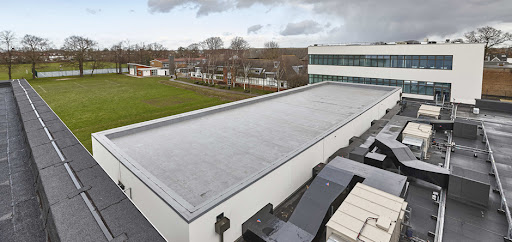Homeowners and construction companies continue to develop buildings for either residential or commercial purposes. The choice for the type of roofing depends on the client and can include traditional slate, flat or EPDM model. Clients prefer flat ceilings when constructing conservatory or house extensions because they are affordable and easier to maintain. When the structures are for commercial purposes, the developer can choose to install high-quality materials that can last the design for over twenty years with proper maintenance. The maintenance of the structures includes performing operations that can increase their durability. The following tips can help you maintain a flat slate to achieve a longer lifespan.
1. Remove Debris
The presence of debris on the slate of the structure can interfere with the free flow of stormwater, puncture, or cause scratching of the surface. The trash could occur after the occurrence of the storm. Besides, large sand particles could accumulate and quickly settle on the slate when the building's location is along the road. To prevent the damage caused by the debris, people should conduct a routine check for debris every two months and after the occurrence of the storm. Early removal eliminates the impact of the litter.
2. Maintaining of Flashing
Flashings are materials used to provide protection where two opposing surfaces meet. The points of convergence are usually weak and are vulnerable to leaking. The use of flashing ensures that water does not leak from these slates. Because of frequent exposure to changing environmental weather conditions, the flashing becomes weak over time and requires periodic replacement. You can monitor the flashing condition of the material after every summer and winter. When you discover the materials are fragile, you can conduct maintenance after two years.
3. Clearing the outlets
Flat roofs have a gentle slope of about fifteen degrees to allow stormwater flow from the surface. You should ensure that the water collection outlets remain clean and prevent the destruction of the membrane, which can cause leaking.
4. Check for Punctures
When drains are in working condition, and the slate is clean, you should examine the roofing membrane for punctures, rips, or tears. The materials used for the membrane are usually sealed in layers to provide a watertight barrier. Although the materials have a specific lifespan, exposure to solid ice during winter could accelerate the materials' property deterioration. Therefore, you should periodically check for punctures after winter to establish if damage occurred and whether to change them.
5. Check for Splits and Cracks
Changes in weather patterns, poor craft, and pressure can cause the splitting and cracking of the membrane. When the structure's location has trees nearby, the fall of branches induces stress on the membrane. Besides, the leaves from the trees should be regular cleared from the surface to avoid trapping water which can cause cracking of the slate membrane due to existing temperature differences.
Maintenance of surface membrane can prevent premature repair and installation by increasing the lifespan of the structure. The homeowner and construction companies can consider the above tips to ensure that the roofing membrane design remains solid for a more extended period.
